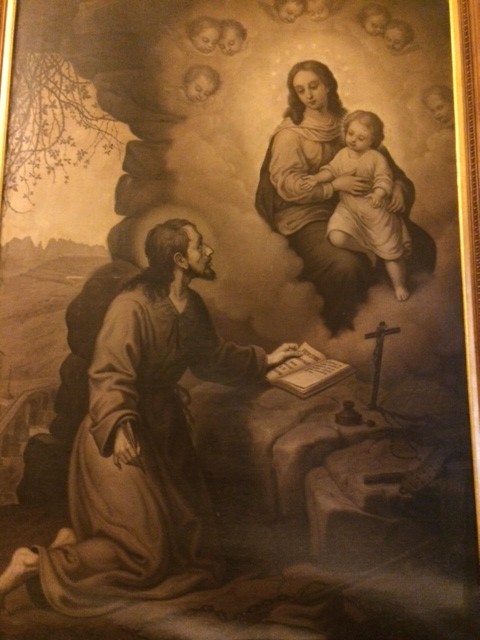
This Summer, nine members of our faculty and staff are walking a route in Spain with sites related to the life of St. Ignatius. The following post by Mr. Paul Kolker ’03 is the thirteenth in a series of their reflections.
“Crunch, crunch, crunch,” came the familiar refrain from the mixture of dirt, rocks, and loose gravel underneath my dust covered boots. One foot in front of the other. Again and again, for 10 miles. The monotony of my footsteps only amplified the monotony of the more arid parts of Spain: barren fields, an occasional tree, a road sign to indicate that the dusty route we were following was at least the correct one.
After a while, the crunch of the road was drowned out by the screaming of my feet: “Stop. Moving. Stop. Moving.” My lungs also seemed to exhale more frustration than carbon dioxide. The pores of my skin were not sweating so much as they were crying from exposure to the sun’s relentless bombardment of light.
Yet it was in the midst of this physically exhausting monotony that a number of deep personal and spiritual insights began to bubble up in my mind. It’s as though all of the frenetic activity my mind has become accustomed to back home drained out of me with every step, making room in the process for God’s divine influence.
One insight that presented itself to me was a further reflection on our journey up the mountain from the second day of hiking. If you have read my post for that day, you will remember that there was a point in our ascent where we began to cross into a cloud. Well, it became clear to me that the cloud obscuring the top of the mountain could be likened to the mystery that enshrouds life after death: though we cannot see why lies behind it, we do see the part of the mountain that disappears into it; and it is reasonable to suspect that it continues. Even the moment of separation we experienced–when we could no longer see those who had become lost in the cloud–even that could be understood as an image of the Saints who have gone before us on the mountain of faith, offering us the hope that the summit, though invisible to our eyes, will be revealed to us when we too pass through the veil. Finally, our reunion on the top of the mountain and the joy that came with it elevated my mind to the hope that we will all be reunited with those who have journeyed before us into the cloud on their ascent to God.
And all of this only occurred to me after miles of placing one foot in front of the other on the path laid out before us. Perhaps this is why St. Ignatius stresses repetition so much in his Spiritual Exercises. In the mundane, repetitive, and even physically exhausting activities, our minds and hearts are free to contemplate the mysteries of God and the way He is calling us to walk towards Him. Perhaps this is also why he sought to pray in the cave at Manresa, for in the solitude of a barren environment our minds are freed from the distractions of this world and able to enter more fully into the attractions of God.

